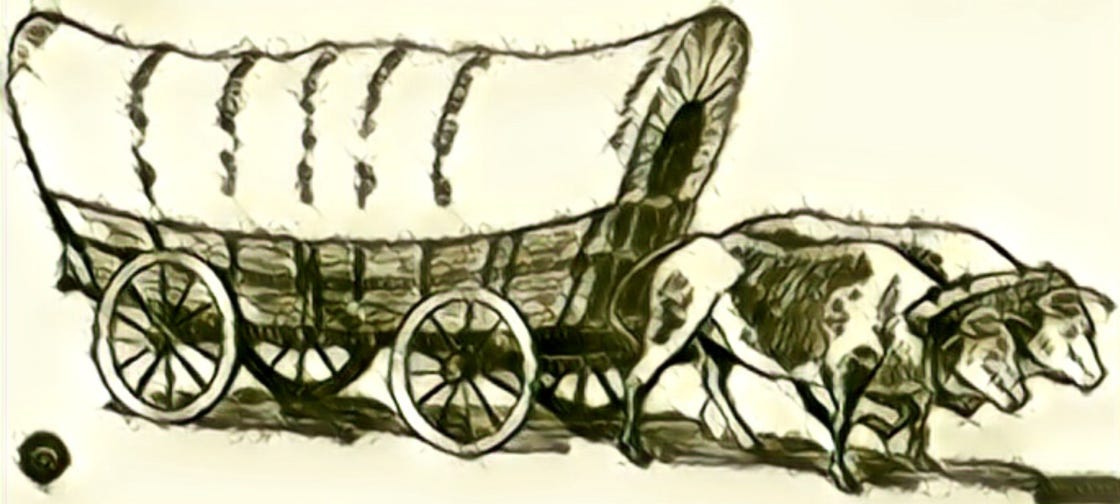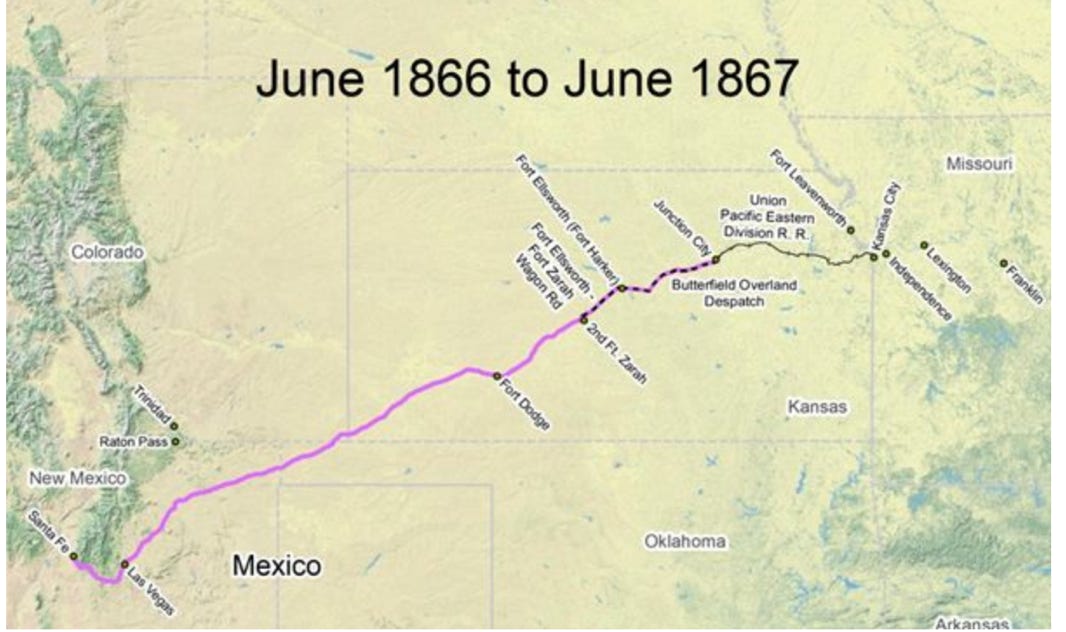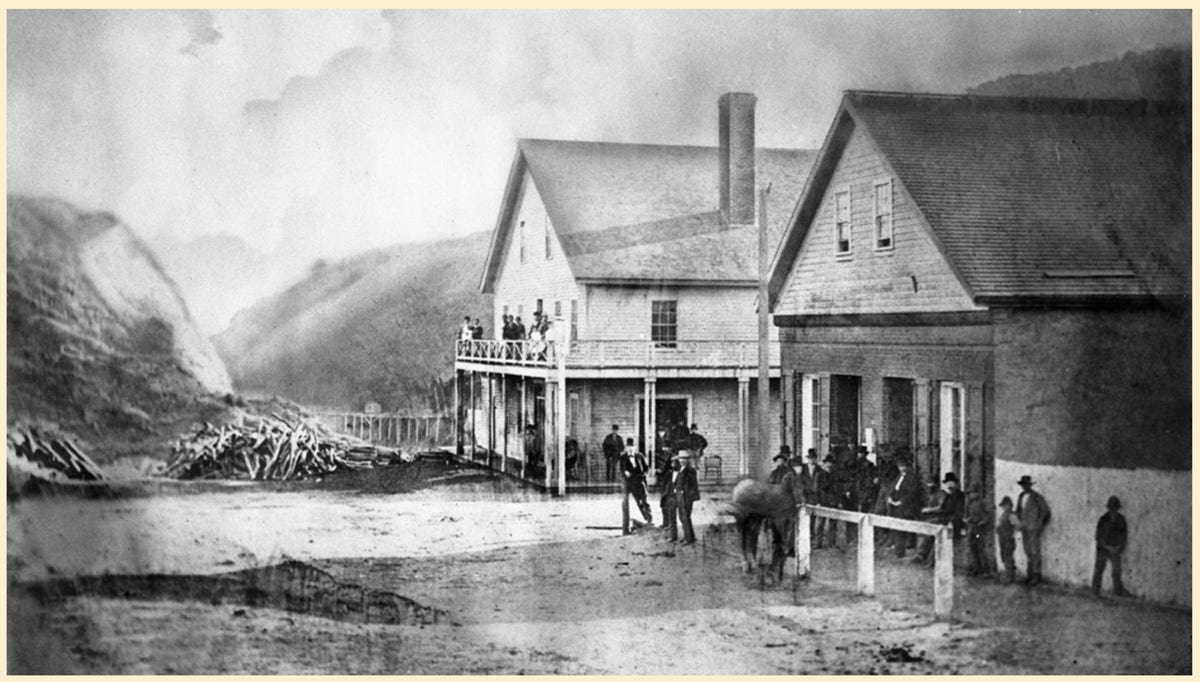Yesterday’s News Remembering Our Forgotten Past April 2024
Daniel Oliver Out West
Daniel Oliver Heads West after the Civil War
The story of Daniel Oliver following the Civil War is the story of America after the Civil War. The war had traumatized the country, but also had invigorated industrial development unprecedented in the history of the world. The men who survived the war were filled with the energy of survivors, ambitious to live full lives, to realize the promise of youth. They were courageous, industrious, ambitious and restless, hard-working and practical. They would travel, explore, marry, experiment, and, most of all, work hard to build a future for themselves and America. This energy was released at the very time that a young country was opening half a continent to development, creating unparalleled opportunity to prosper, even to grow rich.
In June of 1865, Daniel and his brother George (my great-grandfather) were discharged from military service and returned to Smoke Town where they no doubt had many tales to share. George went back to work as a carpenter with plans to remain in Franklin County. We don’t know much about Daniel’s activities in Franklin county in the first year after the war, but by 1866 he was clearly restless as he headed west and at Kansas City, Missouri he contracted to drive a Prairie Schooner carrying eight tons of bacon to Santa Fe, New Mexico by way of the well-traveled Santa Fe trail. His trip was made at the same time that an effort was being made to replace wagon travel with superior transport by train and new legs in the railroad traffic were being added every few months. The wagon travel on the Santa Fe Trail would eventually be replaced by the famous Achison, Topeka and the Santa Fe railroad. Traffic in freight on the Santa Fe trail was estimated by a St. Louis newspaper in 1866 to be in the millions of tons. In an article in the Lincoln County Herald in 1866 the writer says “From the 20th of May to the 20th of November last there passed over the bridge at 142nd Creek, on the Santa Fe road, 4472 wagons, employing 5,197 men, 1,207 horses, 6,432 mules, 38,281 work oxen and there were carried 26,123,401 pounds of freight….”
We don’t have the specifics of Daniel’s journey, but the average trip from Missouri to Santa Fe took about two months to travel the nearly eight hundred miles. Daniel Oliver’s biography in the volume Spokane and the Inland Empire (Durham, 1912) relates that he traveled the Santa Fe trail driving six yoke of oxen. We have further confirmation of his presence in the west with an entry in the 1870 census of his residence in the small town of Trinidad, California which is on the coast near Oregon. As he entered the western country through California, famous for the gold rush, I have often wondered if his initial goal in heading west was the pursuit of mineral treasure, considering his interest in mining later in life.
In the years after 1870 Daniel continued drifting north from California to Dallas, Oregon where he was living in 1873 when he married local girl Amanda Ham on Christmas day of that year. In an article in the Spokesman-Review in 1931 Amanda recalled their meeting: “In those days women were few in number. It was not strange that I began to receive attention from those of the sterner sex at an early age. Among the number was one Daniel K. Oliver, formerly of Pennsylvania, an ex-soldier who had given much service to his country during the Civil War, having been engaged in many battles during that crucial period of our history. I seemed to take his fancy and when I reached 16, we were married.”



Trinidad, California in 1875.